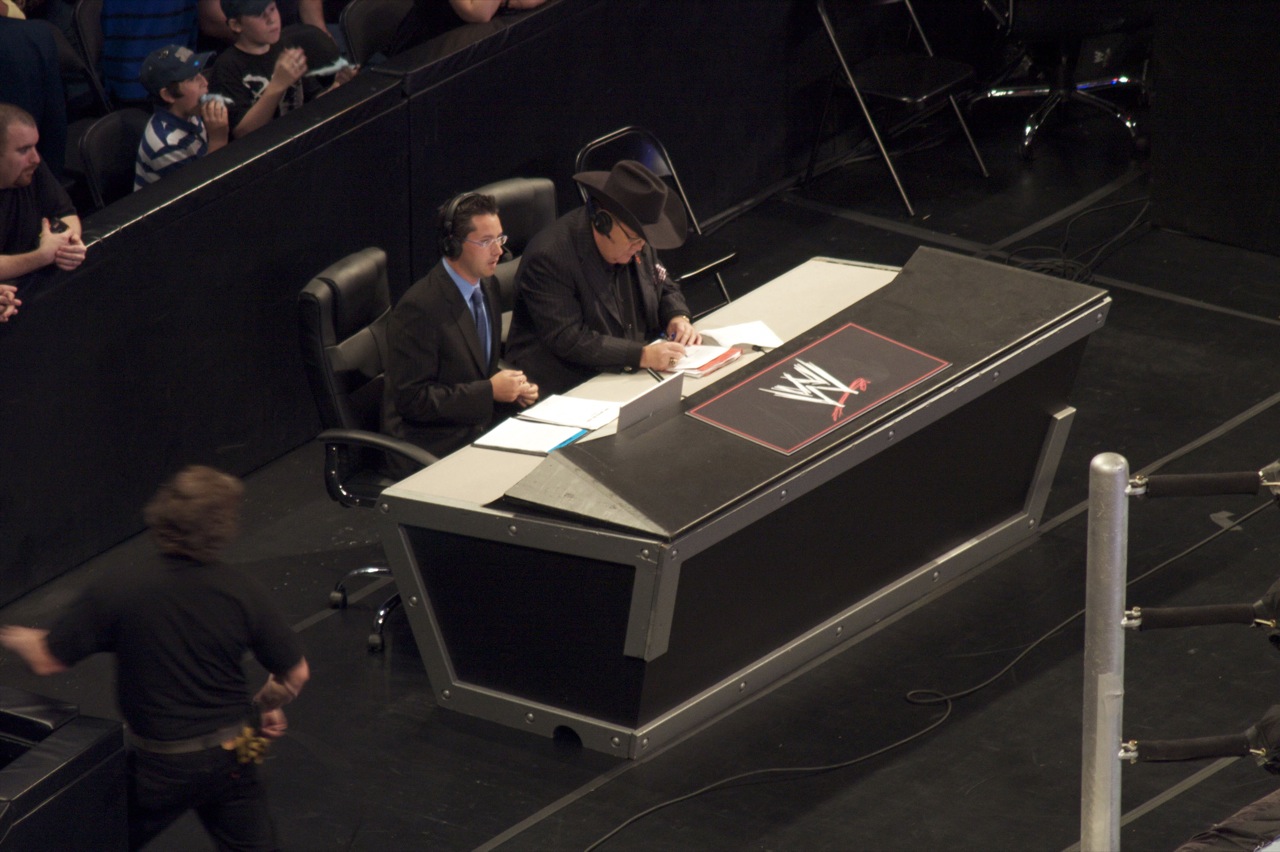|
Plunderphonics Albums
Plunderphonics is a music genre in which tracks are constructed by sampling recognizable musical works. The term was coined by composer John Oswald in 1985 in his essay "Plunderphonics, or Audio Piracy as a Compositional Prerogative", and eventually explicitly defined in the liner notes of his ''Grayfolded'' album. Plunderphonics can be considered a form of sound collage. Oswald has described it as a referential and self-conscious practice which interrogates notions of originality and identity. Although the concept of plunderphonics is seemingly broad, in practice there are many common themes used in what is normally called plunderphonic music. This includes heavy sampling of educational films of the 1950s, news reports, radio shows, or anything with trained vocal announcers. Oswald's contributions to this genre rarely used these materials, the exception being his rap-like 1975 track "Power." The process of sampling other sources is found in various genres (notably hip-hop ... [...More Info...] [...Related Items...] OR: [Wikipedia] [Google] [Baidu] |
Sound Collage
In music, montage (literally "putting together") or sound collage ("gluing together") is a technique where newly branded sound objects or compositions, including songs, are created from collage, also known as montage. This is often done through the use of sampling, while some playable sound collages were produced by gluing together sectors of different vinyl records. In any case, it may be achieved through the use of previous sound recordings or musical scores. Like its visual cousin, the collage work may have a completely different effect than that of the component parts, even if the original parts are completely recognizable or from only one source. History The origin of sound collage can be traced back to the works of Biber's programmatic sonata ''Battalia'' (1673) and Mozart's ''Don Giovanni'' (1789), and some critics have described certain passages in Mahler symphonies as collage, but the first fully developed collages occur in a few works by Charles Ives, whose piece ... [...More Info...] [...Related Items...] OR: [Wikipedia] [Google] [Baidu] |
John Oswald (composer)
John Oswald (born May 30, 1953 in Kitchener, Ontario) is a Canadian composer, saxophonist, media artist and dancer. His best known project is ''Plunderphonics'', the practice of making new music out of previously existing recordings (see sound collage and musical montage). Early life Oswald was introduced to sampling from a young age having been gifted a reel-to-reel player from his parents at age 9. He then attended Simon Fraser University in the 1970s, becoming part of World Soundscape Project while on campus. It was there that Oswald became familiar with recorded sounds from different environments and applying them to new work created. Philosophy Oswald coined the term "plunderphonics" to describe his craft in a paper calle"Plunderphonics, or Audio Piracy as a Compositional Prerogative"which he presented at the Wired Society Electro-Acoustic Conference in Toronto in 1985. Inspired by William S. Burroughs' cut-up technique, Oswald had been devising plunderphonic-style composi ... [...More Info...] [...Related Items...] OR: [Wikipedia] [Google] [Baidu] |
Genre
Genre () is any form or type of communication in any mode (written, spoken, digital, artistic, etc.) with socially-agreed-upon conventions developed over time. In popular usage, it normally describes a category of literature, music, or other forms of art or entertainment, whether written or spoken, audio or visual, based on some set of stylistic criteria, yet genres can be aesthetic, rhetorical, communicative, or functional. Genres form by conventions that change over time as cultures invent new genres and discontinue the use of old ones. Often, works fit into multiple genres by way of borrowing and recombining these conventions. Stand-alone texts, works, or pieces of communication may have individual styles, but genres are amalgams of these texts based on agreed-upon or socially inferred conventions. Some genres may have rigid, strictly adhered-to guidelines, while others may show great flexibility. Genre began as an absolute classification system for ancient Greek literature, a ... [...More Info...] [...Related Items...] OR: [Wikipedia] [Google] [Baidu] |
Sampling (music)
In sound and music, sampling is the reuse of a portion (or sample) of a sound recording in another recording. Samples may comprise elements such as rhythm, melody, speech, sounds or entire bars of music, and may be layered, equalized, sped up or slowed down, repitched, looped, or otherwise manipulated. They are usually integrated using hardware ( samplers) or software such as digital audio workstations. A process similar to sampling originated in the 1940s with '' musique concrète'', experimental music created by splicing and looping tape. The mid-20th century saw the introduction of keyboard instruments that played sounds recorded on tape, such as the Mellotron. The term ''sampling'' was coined in the late 1970s by the creators of the Fairlight CMI, a synthesizer with the ability to record and play back short sounds. As technology improved, cheaper standalone samplers with more memory emerged, such as the E-mu Emulator, Akai S950 and Akai MPC. Sampling is a foundation of ... [...More Info...] [...Related Items...] OR: [Wikipedia] [Google] [Baidu] |
Rapping
Rapping (also rhyming, spitting, emceeing or MCing) is a musical form of vocal delivery that incorporates "rhyme, rhythmic speech, and street vernacular". It is performed or chanted, usually over a backing beat or musical accompaniment. The components of rap include "content" (what is being said), "flow" (rhythm, rhyme), and "delivery" (cadence, tone). Rap differs from spoken-word poetry in that it is usually performed off-time to musical accompaniment. Rap is a primary ingredient of hip hop music commonly associated with that genre; however, the origins of rap predate hip-hop culture by many years. Precursors to modern rap include the West African griot tradition, Cockney rhyming slang, certain vocal styles of blues, jazz, 1960s African-American poetry and ''Sprechgesang''. The use of rap in popular music originated in the Bronx, New York City in the 1970s, alongside the hip hop genre and cultural movement. Rapping developed from the role of master of ceremonies (MC) at ... [...More Info...] [...Related Items...] OR: [Wikipedia] [Google] [Baidu] |
Announcer
An announcer is a voice artist who relays information to the audience of a broadcast media programme or live event. Television and other media Some announcers work in television production, radio or filmmaking, usually providing narrations, news updates, station identification, or an introduction of a product in television commercials or a guest on a talk show. Music television announcers were also called video jockeys (VJ). Announcers are often voice actors who read prepared scripts, but in some cases, they have to ad-lib commentary on the air when presenting news, sports, weather, time, and television commercials. Occasionally, announcers are also involved in writing the screenplay or scripts when one is required. Sometimes announcers also interview guests and moderate panels or discussions. Some provide commentary for the audience during sporting events known as sports announcers, parades, and other events. Announcers perform a variety of tasks including presenting new ... [...More Info...] [...Related Items...] OR: [Wikipedia] [Google] [Baidu] |
Radio Programming
Radio programming is the process of organising a schedule of radio content for commercial broadcasting and public broadcasting by radio stations. History The original inventors of radio, from Guglielmo Marconi's time on, expected it to be used for one-on-one wireless communication tasks where telephones and telegraphs could not be used because of the problems involved in stringing copper wires from one point to another, such as in ship-to-shore communications. Those inventors had no expectations whatever that radio would become a major mass media entertainment and information medium earning many millions of dollars in revenues annually through radio advertising commercials or sponsorship. These latter uses were brought about after 1920 by business entrepreneurs such as David Sarnoff, who created the National Broadcasting Company (NBC), and William S. Paley, who built Columbia Broadcasting System (CBS). These broadcasting (as opposed to narrowcasting) business organizations be ... [...More Info...] [...Related Items...] OR: [Wikipedia] [Google] [Baidu] |
News
News is information about current events. This may be provided through many different Media (communication), media: word of mouth, printing, Mail, postal systems, broadcasting, Telecommunications, electronic communication, or through the testimony of Witness, observers and witnesses to events. News is sometimes called "hard news" to differentiate it from soft media. Common topics for news reports include war, government, politics, education, health, the Climate change, environment, economy, business, fashion, entertainment, and sport, as well as Wikipedia:Unusual articles, quirky or unusual events. Government proclamations, concerning Monarchy, royal ceremonies, Law, laws, Tax, taxes, public health, and Crime, criminals, have been dubbed news since ancient times. Technology, Technological and Social change, social developments, often driven by government communication and espionage networks, have increased the speed with which news can spread, as well as influenced its conten ... [...More Info...] [...Related Items...] OR: [Wikipedia] [Google] [Baidu] |
Educational Film
An educational film is a film or movie whose primary purpose is to educate. Educational films have been used in classrooms as an alternative to other teaching methods. History Determining which videos should count as the first educational films is controversial. Some researchers suggest that the first educational films were shown in St. Petersburg in 1897, while other studies determined that the first educational films were inspired by the newsreel in 1913. Regardless, the increasing number of educational films could prove that the production of such films started in the early 1900s. Usage of educational film during the late 19th and 20th centuries Educational films are productions aiming to inform target audiences about designated issues.McClusky, F. Dean. "The nature of the educational film." Hollywood Quarterly 2.4 (1947): 371-380. The topic of study varies. Educational cinema was normally divided into three main categories: instructional, educational, and scholastic. Educ ... [...More Info...] [...Related Items...] OR: [Wikipedia] [Google] [Baidu] |
The Wire (magazine)
''The Wire'' (or simply ''Wire'') is a British music magazine publishing out of London, which has been issued monthly in print since 1982. Its website launched in 1997, and an online archive of its entire back catalog became available to subscribers in 2013. Since 1985, the magazine's annual year-in-review issue, Rewind, has named an album or release of the year based on critics' ballots. Originally, ''The Wire'' covered the British jazz scene with an emphasis on avant-garde and free jazz. It was marketed as a more adventurous alternative to its conservative competitor ''Jazz Journal'', and targeted younger readers at a time when ''Melody Maker'' had abandoned jazz coverage. In the late 1980s and 1990s, the magazine expanded its scope until it included a broad range of musical genres under the umbrella of non-mainstream or experimental music. Since then, ''The Wire''s coverage has included experimental rock, electronica, alternative hip hop, modern classical, free improvisat ... [...More Info...] [...Related Items...] OR: [Wikipedia] [Google] [Baidu] |
Identity (philosophy)
In philosophy, identity (from , "sameness") is the relation each thing bears only to itself. The notion of identity gives rise to List of unsolved problems in philosophy, many philosophical problems, including the identity of indiscernibles (if ''x'' and ''y'' share all their properties, are they one and the same thing?), and questions about change and personal identity over time (what has to be the case for a person ''x'' at one time and a person ''y'' at a later time to be one and the same person?). It is important to distinguish between ''qualitative identity'' and ''numerical identity''. For example, consider two children with identical bicycles engaged in a race while their mother is watching. The two children have the ''same'' bicycle in one sense (''qualitative identity'') and the ''same'' mother in another sense (''numerical identity''). This article is mainly concerned with ''numerical identity'', which is the stricter notion. The philosophical concept of identity is dist ... [...More Info...] [...Related Items...] OR: [Wikipedia] [Google] [Baidu] |





.jpg)